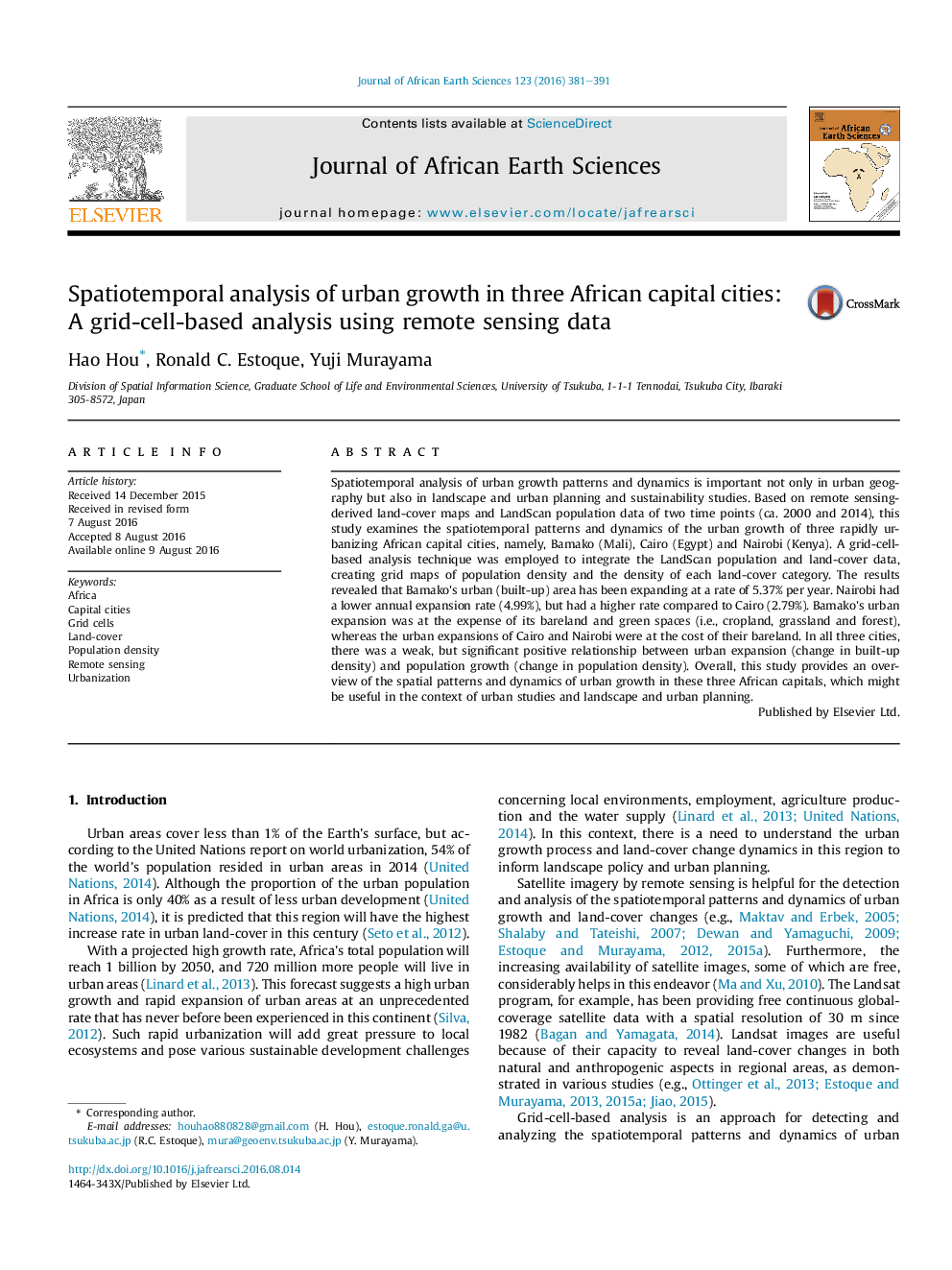| Article ID | Journal | Published Year | Pages | File Type |
|---|---|---|---|---|
| 4728189 | Journal of African Earth Sciences | 2016 | 11 Pages |
•Urban growth patterns and dynamics of three African capital cities were examined.•Bamako had the highest annual urban growth rate, followed by Nairobi and Cairo.•Urban expanded at the expense of bareland was detected in all three cities.•Urban expansion had a weak correlation with population change in all three cities.
Spatiotemporal analysis of urban growth patterns and dynamics is important not only in urban geography but also in landscape and urban planning and sustainability studies. Based on remote sensing-derived land-cover maps and LandScan population data of two time points (ca. 2000 and 2014), this study examines the spatiotemporal patterns and dynamics of the urban growth of three rapidly urbanizing African capital cities, namely, Bamako (Mali), Cairo (Egypt) and Nairobi (Kenya). A grid-cell-based analysis technique was employed to integrate the LandScan population and land-cover data, creating grid maps of population density and the density of each land-cover category. The results revealed that Bamako's urban (built-up) area has been expanding at a rate of 5.37% per year. Nairobi had a lower annual expansion rate (4.99%), but had a higher rate compared to Cairo (2.79%). Bamako's urban expansion was at the expense of its bareland and green spaces (i.e., cropland, grassland and forest), whereas the urban expansions of Cairo and Nairobi were at the cost of their bareland. In all three cities, there was a weak, but significant positive relationship between urban expansion (change in built-up density) and population growth (change in population density). Overall, this study provides an overview of the spatial patterns and dynamics of urban growth in these three African capitals, which might be useful in the context of urban studies and landscape and urban planning.
